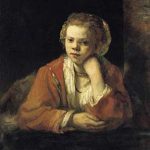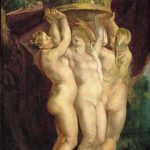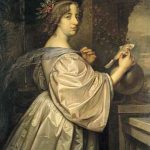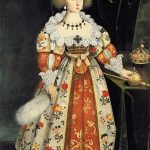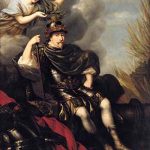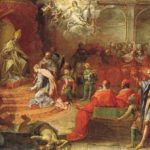Christina of Sweden: The Royal Collections
A selection of a 150 works to mark the evolution of the history and taste of the Scandinavian country between the XVII and XVIII centuries
October 31 2003 / January 15 2004
Roma – Palazzo Ruspoli (37.620 visitors)
Catalogue – Electa
- Rembrandt Harmensz van Rijn Giovane domestica (Ragazza alla finestra)
- Peter Paul Rubens e aiuti Jan Brueghel il Giovane Le tre grazie con un cesto di rose
- Lorens Pasch il Giovane Gustavo III
- Justus van Egmont La Regina Cristina nelle vesti di Minerva
- Jacob Ferdinand Voet Ritratto di Cristina Regina di Svezia
- David Beck Ritratto della Regina Cristina
- Cerchia di Jacob Heinreich Elbfas Ritratto della Regina Cristina da bambina
- attribuito a David Klocker Ehrenstrahl Gustavo II Adolfo re di Svezia
- Anonimo artista veneziano precedentemente attribuito ad Angelo Trevisani La Regina Cristina s’inginocchia davanti a Papa Alessandro VII
- Carrozza dell’incoronazione di Cristina di Svezia e finimenti per sei cavalli
On October 28, 2003, in the presence of LL.AA.RR. King Carl XVI Gustaf and Queen Silvia, the exhibition “Christina of Sweden: The Royal Collections” was inaugurated in the halls of Palazzo Ruspoli. The exhibition served as a contribution to knowledge and history, paying homage to a member country of the European Union during the period when Italy held the presidency for six months. The exhibition was curated by the National Museum, the Royal Armory, and the Swedish Royal Collections, and organized by Fondazione Memmo.
The first exhibition in Italy dedicated to Sweden, its reigning dynasties, and their rich collections. Through a selection of approximately one hundred and fifty objects, the exhibition traced the evolution, between the 17th and 18th centuries, of the history and taste of the Scandinavian country that the Romans called “Ultima Thule,” to mean the last known frontier of the European continent.
This marks the richest and most interesting period in the “modern” history of Sweden, the two centuries during which, emerging from a prolonged medieval era, the country saw the formation of a strong national identity and became a major political, economic, and military power.
For Italians, and Romans in particular, the most significant figures in the history of Sweden during this period are the two monarchs who open and close this era: Queen Christina (1644 – 1654) and King Gustav III (1746 – 1792). Christina of Sweden, the child queen who led Sweden to the end of the Thirty Years’ War and the Peace of Westphalia, was a strong and decisive ruler. She abdicated the throne, converted to Catholicism, and lived in Rome, leaving a lasting mark with her strong and passionate character and profound love for art and humanistic and scientific culture.
Gustav III, the king in Verdi’s “Un ballo in maschera”, was a sovereign with a complex and often contradictory personality, a lover of Italy and neoclassicism. He created the Swedish neoclassical style and collected works of art. He had a theatrical vocation, wrote dramas, and designed stage sets and costumes. Interested in garden art and architecture, he gave a new face to his capital. Fascinated by chivalric epics, he organized tournaments and carousels and was both loved and hated until he was fatally shot during a fateful ball at the Opera.
Between these two extraordinary figures, two crucial centuries in Swedish history unfolded.

